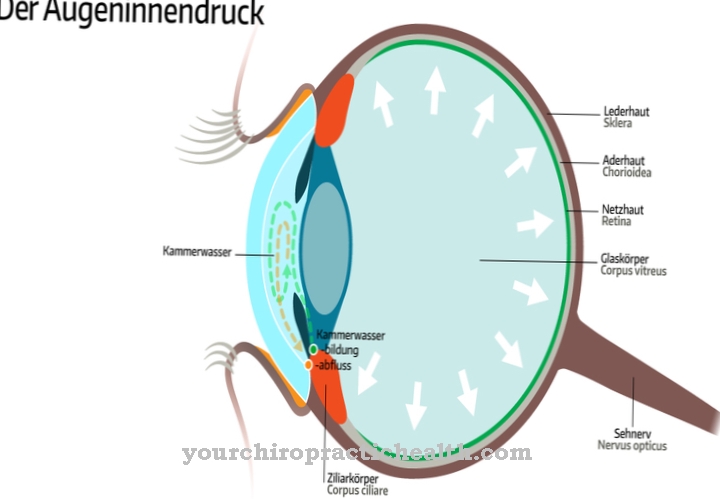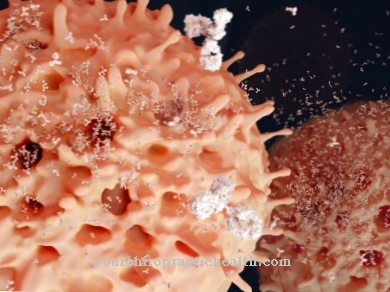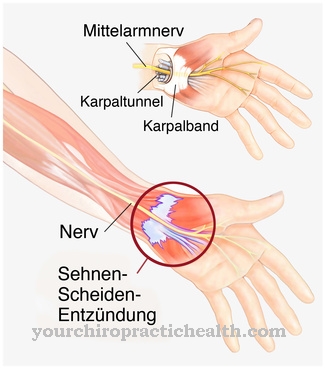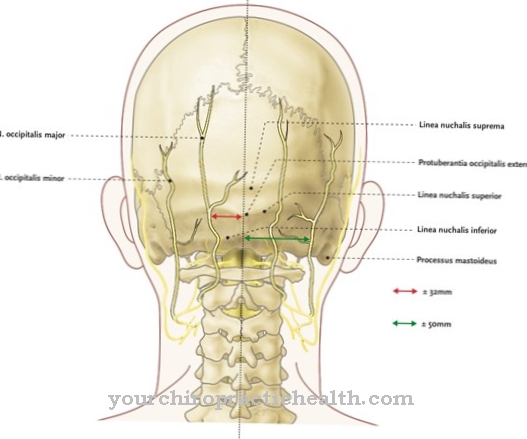As gene is a specific section on DNA. It carries hereditary information and, in conjunction with the other genes, controls all of the physical processes.Changes in genes can be both harmless and cause serious malfunctions in the organism.
What is a gene?
Genes As specific sections on the DNA, they are the basic units of the entire genetic make-up. The totality of all genes occurring in the organism is called the genome. Their interaction guarantees all vital functions of the organism. The individual gene is the basis for the complementary copy in the form of a ribonucleic acid (RNA). This RNA in turn mediates the translation of the genetic code into the amino acid sequence of a protein.
In this way, the information stored in the genetic make-up is transferred from the DNA via the RNA to the enzymes and structural proteins. Each gene stores specific hereditary information that is expressed in certain properties or functions of the organism. Each type of organism has a characteristic number of genes, the number of which does not say anything about the complexity of the living being. For example, humans contain 35,000 genes.
Anatomy & structure
As a segment of DNA, a gene, like all DNA, is identified by a sequence of base pairs on a double helix. DNA (deoxyribonucleic acid) is a chain molecule made up of nucleotides, which in turn each consist of a nitrogen base, a sugar molecule (here deoxyribose) and a phosphoric acid residue.
The four nitrogen bases adenine, guanine, thymine and cytosine are available for a single strand of DNA. The special sugar molecule, however, causes the structure of a double helix strand, with the individual nitrogen bases being opposed to the corresponding complementary bases. The sequence of the nitrogen bases in the DNA stores the genetic information as a genetic code.
If the double helix splits up during cell division, the respective single strands are completed again to form a double strand. In eukaryotes (living organisms with a cell nucleus) the DNA molecules are packed in protein. The entire structure is called a chromosome. Humans have 23 pairs of chromosomes, with one chromosome each coming from one parent. This means that the genes for the same functions also face each other as alleles.
There are coding (exon) and non-coding (intron) segments within the gene. The exons contain the genetic information necessary for the organism. The introns are often old, no longer active information. Thus, the exons within the genes are responsible for transcribing the necessary genetic code into the amino acid sequence of the proteins.
Function & tasks
The first task of genes is to store all of the genetic information necessary for the functions of the organism. Furthermore, they are responsible for passing this information on to subsequent cells during cell division or transferring it to the next generation of organisms. The activity of the genes can take place via various mechanisms.
During transcription, the genetic information is first transferred to an RNA. This translates the genetic code into the amino acid sequence of the protein as part of protein biosynthesis. However, not all information always has to be available in the same way. In certain activity phases of the organism, special enzymes or hormones are increasingly required, while other proteins are not needed. A complicated regulatory mechanism then either stimulates or blocks genes for protein biosynthesis.
This can be done by the attachment and detachment of special proteins on certain DNA sections. When cells divide, the entire genetic code has to be transferred from the starting cell to the next generation of cells. The double helix of the DNA splits into single strands. However, each single strand is completed again to form a double strand by the addition of nucleotides with complementary nitrogen bases.
However, errors, so-called mutations, can occur that lead to a change in the genetic information. To avoid mutations, the organism in turn has a highly efficient repair system. Through these processes, the genetic code is passed on largely unchanged to the next generation. However, should a modified gene be inherited, it can lead to a serious genetic disease.
Illnesses & complaints
If modified genes are transmitted, serious diseases of the same organism or genetic diseases of subsequent generations can occur. The appearance of cancer is often the result of genetic changes during cell division. Usually the immune system will kill the changed cell. However, under special conditions, such as a high mutation rate due to environmental influences, the immune system can be overwhelmed, causing unregulated cell growth.
More well-known in connection with gene mutations, however, is the occurrence of genetically determined diseases. Often only individual genes are affected. A wide variety of diseases can occur, depending on the functions or properties that the gene represents. Every human being contains two genes for the same function, since they come from both parents. There are genetic diseases that are inherited as an autosomal recessive trait. The disease only occurs here if both parents pass on a modified gene.
Examples of these diseases are cystic fibrosis, phenylketonuria or the cleft lip and palate. Other diseases are inherited in an autosomal dominant manner, such as Huntington's chorea, Marfan's syndrome or retinoblastoma. Here the transmission of a gene from a sick parent is sufficient. Some diseases, such as diabetes, only have a genetic disposition and are largely dependent on environmental conditions or lifestyle.












.jpg)



.jpg)










.jpg)
